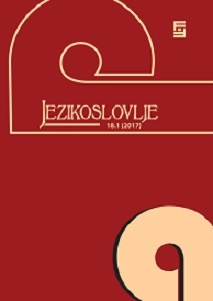Pleonastic negation from a cross-linguistic perspective
Pleonastic negation from a cross-linguistic perspective
Author(s): Irena Zovko Dinković, Gašper IlcSubject(s): Morphology, Syntax, South Slavic Languages, Philology
Published by: Filozofski fakultet, Sveučilište Josipa Jurja Strossmayera, Osijek
Keywords: pleonastic negation; negative concord; modality; temporal sequencing; syntax;
Summary/Abstract: In recent linguistic theory, pleonastic negation is treated either as an in-stance of a lexically present but semantically vacuous negation, often placed in relation to negative polarity (e.g. Portner and Zanuttini 2000; Espinal 1992; van der Wouden 1994, among others) or as a special subtype of negation that differs from “proper” or sentential negation in terms of its syntactic, as well as semantic scope, and may actually be considered a form of (negative) modality (Mueller 1991; Abels 2005; Yoon 2011). We follow the latter approach and discuss pleonastic negation as it appears in different languages with the primary focus on Croatian and Slovenian. In doing so, we observe that, even though the syntactic environments in which pleonastic negation occurs are highly comparable, there seems to be a parametric variation as to the level of optionality of pleonastic negation, and to the type of mood with which pleonastic negation is used (Ilc 2012; Zovko Dinković 2015).Based on empirical data, we argue that the difference in the scope of negation between sentential and pleonastic negation is mirrored directly in their syntactic properties: while the former licenses n-words, the latter cannot license them. Both types of negation, however, may trigger the Genitive of Negation in languages still displaying the Genitive of Negation in negated clauses as is the case with Slovenian.The observations and the analysis presented in this paper are aimed at con-tributing to a better understanding of pleonastic negation by attempting to prove that it is neither semantically empty nor a feature of sentence negation, but rather a linguistic phenomenon akin to other means of expressing modality in language.
Journal: Jezikoslovlje
- Issue Year: XVIII/2017
- Issue No: 1
- Page Range: 159-180
- Page Count: 22
- Language: English

